The debate over so-called “giant” human remains, found throughout the Americas and other parts of the world, has remained one of the most contentious discussions among anthropologists and proponents of unconventional historical interpretations. The idea that humans of larger than average stature might have existed long ago, and in greater numbers than they appear today, has been largely refuted; however, there may indeed be evidence that supports the notion is correct, at least in part.
Below is a collection of supplemental articles that relate to the discussion of large human skeletons discovered in the Americas and other parts of the world, which was also featured in an essay I contributed to the recent New Page Books anthology Lost Secrets of the Gods (2014). This essay suggests that some legends of giants that exist in Native American legends were inspired by actual people of large size, though many would argue their stature would not be particularly “gigantic” or otherwise anomalous in terms of record human heights in modern time. The comparisons are nonetheless useful, I feel, in relation to understanding the mythic traditions and folklore surrounding giants in the Americas, as well as in other parts of the world.
As my research has continued, please note that my viewpoints have at times changed, as is expected throughout the course of research. While the presentation here is fundamentally skeptical, it is not dismissive toward the interpretation of some of the data as being representative of actual large humans, which some have called “giants.” However, a number of factors must be considered in substantiating such an argument, particularly the incorporation of reliable historic, scientific, and statistical models that could substantiate certain claims of bodies that do exceed record heights among humans, as well as their incidental occurrence over historical periods, data relating to their location and grouping, etc.
In my article Big Buried Secrets: Giant Skeletons and the Smithsonian from last year, I looked at a handful of instances where the mention of large skeletons and their discovery do appear in Smithsonian literature from the 1890s. Whether or not one chooses to call these large bodies “giants” or not, I have argued, may be largely a semantic debate. Additionally, I have attempted to address allegations as to whether or not a “conspiracy” exists to hide the discovery of such large remains; obviously, if valid Smithsonian documentation can be cited as evidence, this would seem to detract from the “cover up” hypothesis. This article also contains links to skeptical commentary on the subject which, at the time, had erroneously misinterpreted the piece as supporting a conspiratorial viewpoint; I should note that the blogger later recanted that position following dialogue we shared on the subject, and some of those positions are useful to the greater discussion.
The article above was followed by The Lost Giants: A Great Big Contentious Debate, in which I further present documentation from the Smithsonian’s own accession card catalogue which supports (along with visual evidence) the existence and storage of large human remains. One of these, the Graham skull, was large enough to support a brain capacity of 2100 cc, perhaps the largest on record. I’ll leave it to the reader as to whether or not one chooses to call a human skull of this size “gigantic,” though as a matter of common usage, the description would seem to be accurate. This does not, however, suggest a separate race of individuals apart from humans had existed, as there is no anthropological evidence for such a claim.
Another article on this subject which has recently drawn attention was authored by Dr. Greg Little, a psychologist who co-authored the book Path of Souls: The Native American Death Journey; Cygnus, Orion, the Milky Way, Giant Skeletons in Mounds, & the Smithsonian. This article, The Truth About Giant Skeletons in American Indian Mounds, presents a very thorough analysis of the situation, which became a central focus of the aforementioned book, co-authored with Andrew Collins. Little, during a recent correspondence we shared on this subject, wrote that his research is still underway, and that as of this weekend an updated article will be appearing online at the website of Alternate Perceptions Magazine. (As a side note, I hope to gain specific details about the statistical analysis he mentions in the article, data which would be of great aid in further research.)
Finally, below are a series of images (in no particular order) which depict items of discussion on tonight’s Coast to Coast AM appearance, ranging from actual Smithsonian card entries on large human remains, to photos depicting specific items kept in storage at the Smithsonian offsite storage facility. Also note the image depicting bodies uncovered on Catalina Island, in a grave where it is noted that several bodies exceeding seven feet in height were discovered (click any of these to enlarge the image).
Thanks to Jim Viera, Micah Ewers, Greg Little, Hugh Newman, and J.E. for assistance with this research.

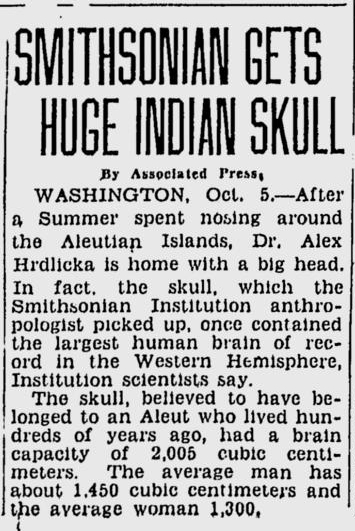

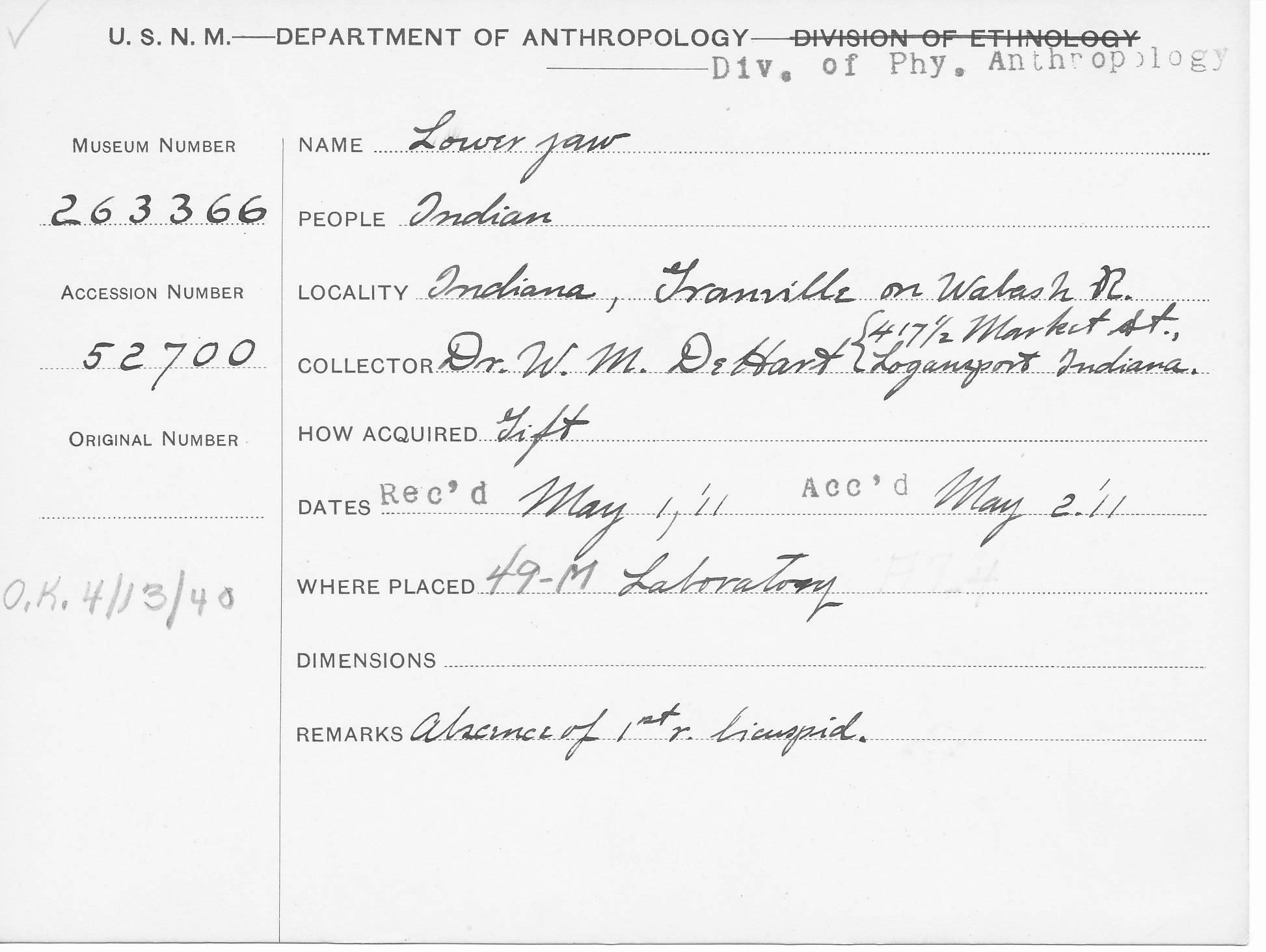
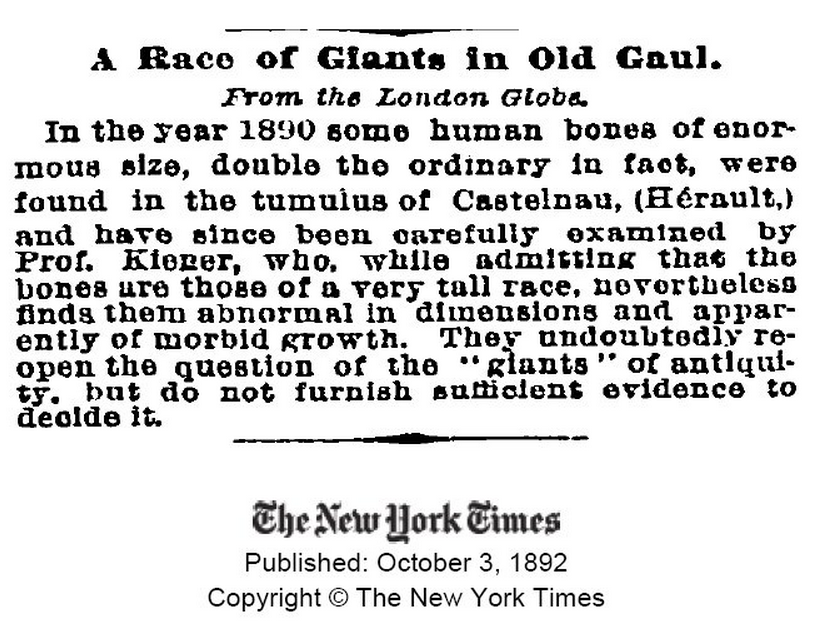

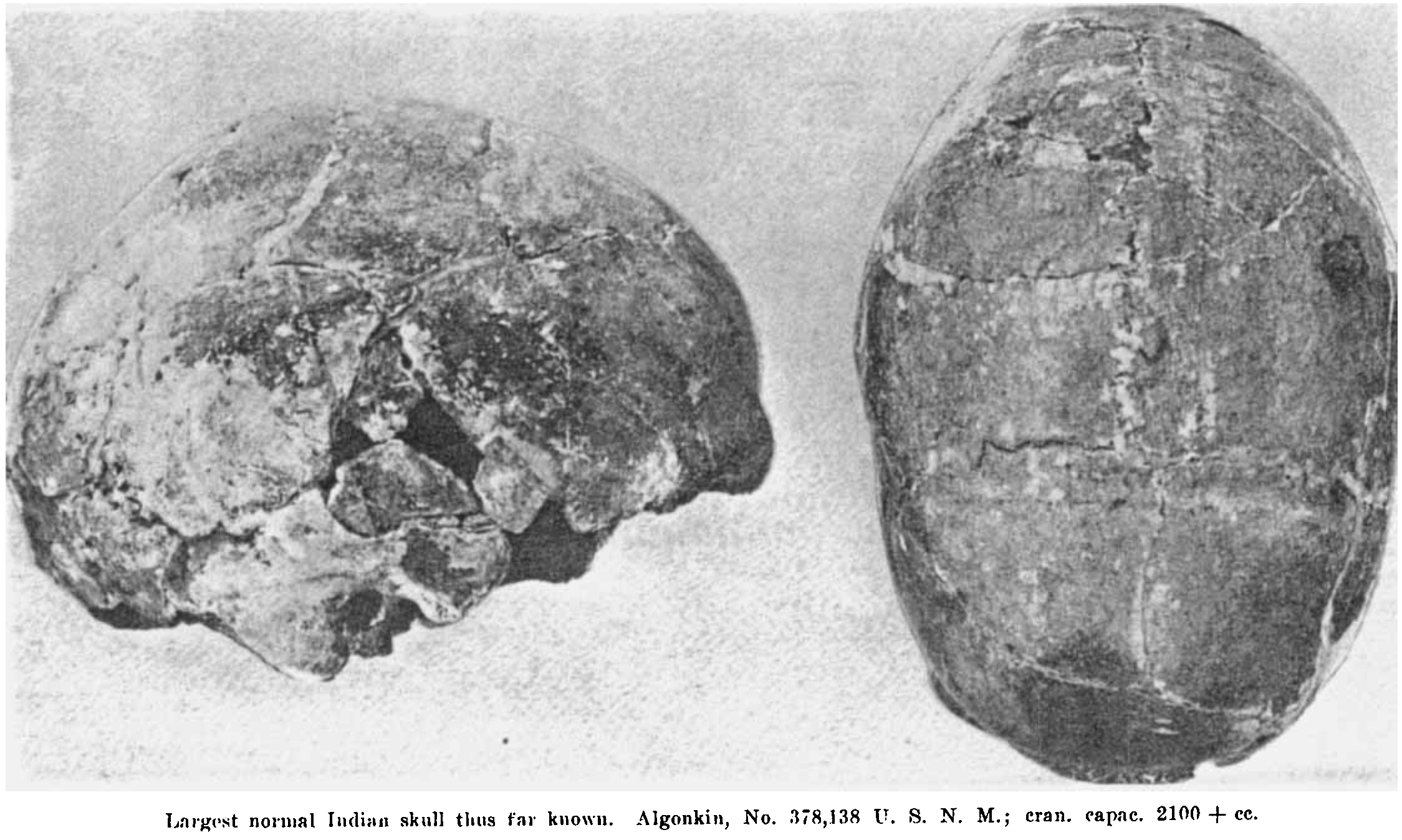
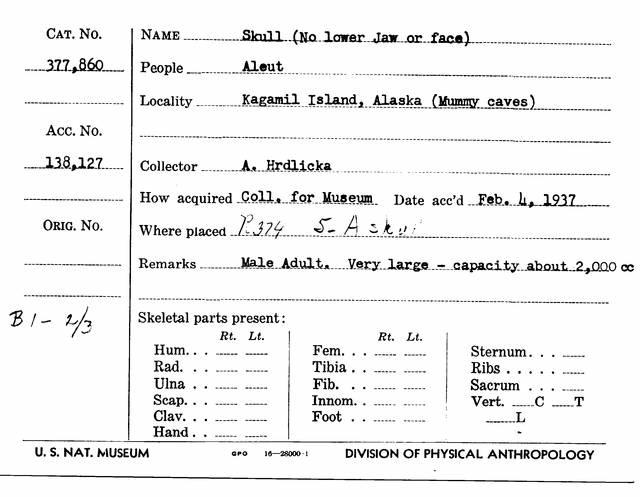
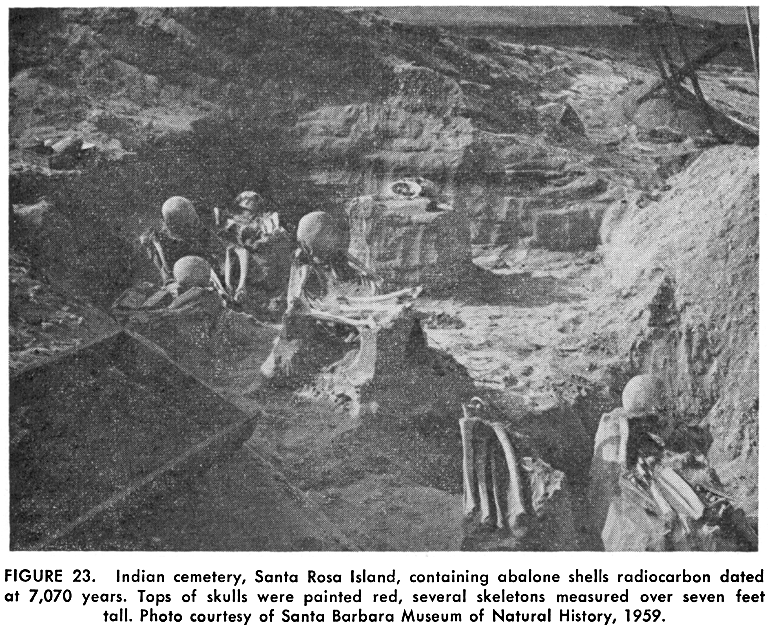

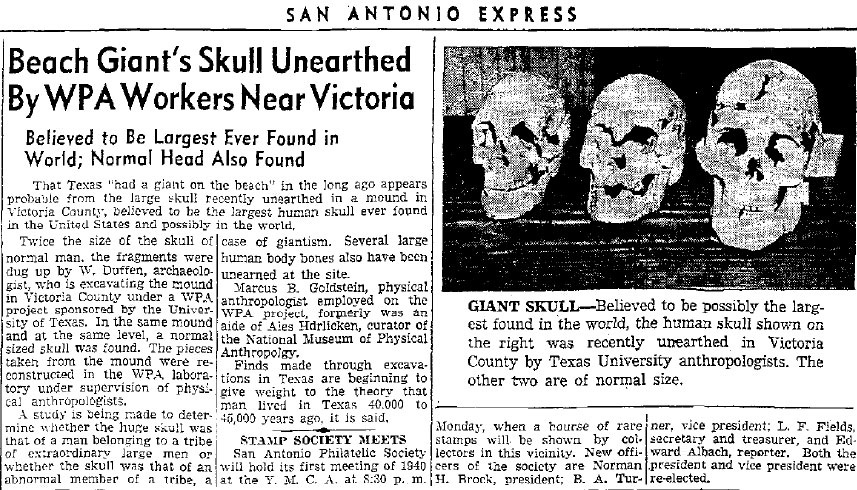
I live in Reno Nevada. At one time I had long red hair when I was ending my externship at a local clinic that catered to Indians. They always treated me funny. Something was off. One day one of them asked a strange question, how tall was my father, grandfather. My last name is Birdsong and though I am short my father is 6’8 and his father 7’2 my aunt’ 6’10 and everyone but me well over 6’5. The family legend is we are part indian which shows up in dark skin but with striking grey eyes. This indian told me about the folk lore of tall red head indians. Grey eyes and double rows of teeth. The Washoe Indians feared them as they were savage. This was all legendary until 2 huge skeleton s were discovered outside the mining town of Lovelock NV and you can see their remains in the museum out here. The skulls are noticeably larger then the local population. Anyways the local indian s never did warm up to me .
In the ancient world animals were large, dinosaurs etc. Question could the giants, as we refer to them, have been from that period and human kind today is the new kid on the block. Of course this would make it contrary to the biblical account. Good reason for the world elite to hide the remains of giants.
We are told there is a good accounting of the genesis of red headed people, as Jessica refers to herself, in part based on DNA tracing. However, if the giants predated human kind then the biblical account is a false narrative only at it pertains to the in the beginning. Might it be the so called God or Lord of the bible was an ET race who supplanted the giants through conquest. Joshua, who succeeded Moses, went into the land of Canaan and slayed them, giants, by the boat load.
The so called flood story of Noah, which in fact comes from the story of Gilgamesh, did not wipe them out. Best evidence for me is the fossil record of burial mounds within the US as well as other countries.
why are these “giants” not further identified nor explored for connections with another human line or offshoot of cro magnon??
In the late fifties, when I was around 10, I visited the Lovelock Museum with my parents. I saw a few large skulls that looked fire-damaged and were quite different in appearance from normal human skulls. There was also a giant mummy about 8 feet long in a glass case. It was dressed in roughly woven clothing. The face was hideous and looked like it might have been caved-in by a blow. The huge hands were in perfect condition and I found them fascinating. I could see the skin pores and hairs growing out of them. My father was a big man, over six feet, but these hands were much larger than his. I don’t recall the hair as being very red, but the face was so frightening, I didn’t look too closely at the head.